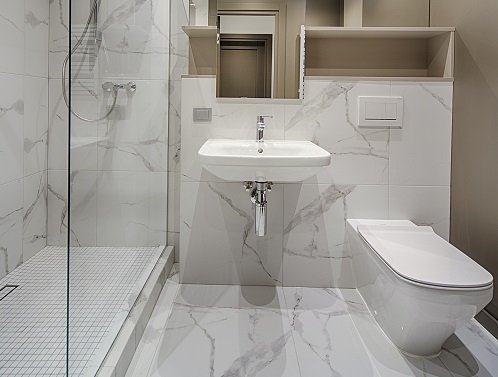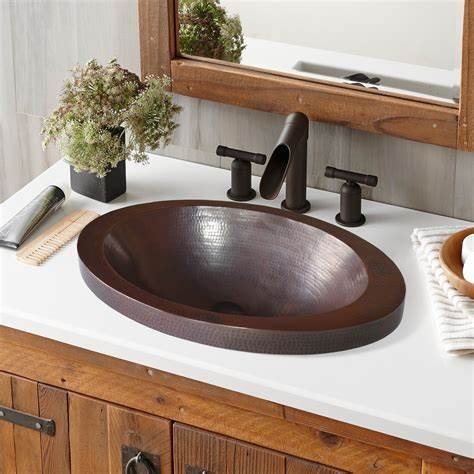Picture this: you’re going about your day, blissfully unaware of the secret world brewing beneath your kitchen or bathroom sink until one day, you notice mushrooms sprouting like miniature forest kingdoms in the darkness of the drain. How did they get there? What risks do they pose?
Mushroom growing in sink drains is typically a sign of excess moisture and organic matter buildup in the plumbing system. The moisture can come from leaks or condensation, while the organic matter consists of food particles and other debris. To address this issue, it’s essential to first eliminate the moisture source by fixing any leaks and improving ventilation.
Regularly cleaning the drain using a mixture of boiling water and vinegar can help remove organic buildup. Additionally, using drain covers or strainers can prevent debris from entering the plumbing. For persistent problems, consulting a professional plumber may be necessary to ensure the plumbing system is properly sealed and functioning to prevent future mushroom growth.
How Mushroom Find Their Way to the Drain
Before we dive headfirst into the marvelous world of mycology within sink drains, let’s first understand how mushrooms, those fascinating fungi, manage to find their way into these seemingly uninviting spaces. The answer is simple yet intriguing! It all boils down to three crucial factors: excess moisture and humidity, organic matter, and lack of proper ventilation. It’s like a fungi paradise down there!
Excess Moisture and Humidity:
Imagine a moisture-laden environment, thanks to that pesky leaky faucet or dripping pipes that never fail to keep the area damp. If you’re like me and have a habit of splashing water around while doing the dishes, it only adds to the moisture problem. These damp conditions create an ideal breeding ground for mushroom spores that are ubiquitous in the air, just waiting for the right opportunity to take root.

Presence of Organic Matter:
To make matters worse, bits of organic debris, such as food scraps and soap residues, fall into the sink, acting as the perfect feast for our mushroom friends. After all, mushrooms are nature’s recyclers, and they thrive on breaking down organic matter. So, the combination of moisture and food scraps creates an irresistible invitation for mushrooms to set up camp in your sink.
Lack of Proper Ventilation:
Lastly, the poor ventilation in some sink drains provides a dark and stagnant hideout, ideal for mushroom spores to settle and grow undisturbed. It’s like a hidden, fungal kingdom beneath your sink!
Potential Risks and Health Concerns Of Mushroom Growing in Drains
Now, you might wonder, what harm could these little sink-dwelling mushrooms possibly cause? Well, buckle up, matey! There are risks, and they aren’t to be taken lightly. While some may have mild reactions, others could be in for a wild allergy ride. Let’s take a closer look at the potential health concerns:
A. Allergic Reactions:
Some individuals may develop allergic reactions to the presence of mushrooms in the sink drain. Symptoms can range from mild to severe and may include sneezing, coughing, runny nose, itchy eyes, and skin irritation. If you find yourself constantly sniffing or rubbing your eyes when near the sink, those mushrooms might be the sneaky culprits.
B. Mycotoxins and Their Dangers:
Oh, but wait, there’s more – some mushrooms can unleash mycotoxins, dangerous substances that can wreak havoc on your health. Mycotoxins are toxic compounds produced by certain types of fungi, and prolonged exposure to these toxins can lead to various health issues, such as respiratory problems, headaches, and even neurological symptoms.
C. Impact on Indoor Air Quality:
As if that wasn’t enough, these pesky mushrooms can also compromise indoor air quality. The spores released by the mushrooms can become airborne and spread throughout your home, leading to respiratory problems and exacerbating allergies. Trust me; I’ve unwittingly inhaled a spore cloud, and it’s no fun at all!

Common Types of Mushrooms in Sink Drains
Ahoy, amateur mycologists! Let’s set sail on a mini-guide to identify the most common mushroom species you might encounter in your sink drain. Knowing your fungal foes will help you better understand how to deal with them effectively.
Cladosporium:
First on the list is the charming Cladosporium, known for its dark green or blackish appearance. This genus is prevalent both indoors and outdoors, and it’s no stranger to our sink drains. Although it rarely causes severe health issues, it can be an annoyance for those with allergies or respiratory sensitivities.
Penicillium:
Then, say hello to our friend Penicillium, not to be confused with the antibiotic penicillin! This fellow sports beautiful blue or green shades and is responsible for the blue molds you might find on food items. While some species of Penicillium are used to produce cheeses like Roquefort and Gorgonzola, their presence in sink drains is less than appetizing.
Aspergillus:
Next up is the notorious Aspergillus, a sneaky fellow that loves to make your life a bit more challenging. Beware, for it comes in various colors like yellow, green, or even black. Aspergillus can produce mycotoxins and is a common indoor mold, posing a health risk to sensitive individuals.
Stachybotrys:
Last but not least, we have the ominous Stachybotrys, better known as black mold. A menacing sight, indeed! This notorious fungus is infamous for producing mycotoxins that can have severe health consequences, especially when exposure is prolonged.
Preventive Measures
Ah, but fret not, dear reader! I’m here to share the ancient secrets of preventing these mushrooms from claiming your sink as their rightful kingdom. The key lies in proactive measures to create an inhospitable environment for our fungal foes. Here are some preventive steps to consider:
A. Regular Cleaning and Maintenance Tips:
Scrub away those enticing food scraps and wipe down the area regularly to discourage mushroom growth. Don’t forget to tackle any leaks promptly to prevent excessive moisture buildup.
B. Ensuring Proper Drainage and Ventilation:
Fix those leaky faucets and invest in a fan or dehumidifier to keep the moisture in check. Ensure proper ventilation to discourage the accumulation of stagnant air.
C. Reducing Excess Moisture and Humidity in the Kitchen/Bathroom:
Consider using exhaust fans while cooking or taking hot showers to reduce humidity levels. Open windows and doors occasionally to allow fresh air circulation.
D. Disposal of Organic Waste Properly:
Be mindful of what goes down the drain – avoid dumping large food scraps and greasy substances that might attract mushrooms. Compost organic waste instead of using the sink as a disposal ground.

Effective Removal Techniques
Now, let’s address the situation when the fungal party is already in full swing. Fear not, brave souls! I’ve devised a step-by-step guide to safely remove those uninvited guests. Remember, though, that proper protective measures are essential. Donning a mask and gloves will keep you safe from spore inhalation and any unwanted contact.
A. Step-by-Step Guide for Safely Removing Mushrooms from Sink Drains:
- Gear Up: Put on a mask, gloves, and eye protection before starting the removal process.
- Remove Visible Mushrooms: Using a disposable paper towel, carefully pick and dispose of visible mushrooms in the trash.
- Clean the Area: Wipe down the sink and surrounding surfaces with a cleaning solution (avoid using bleach, as it can mix with organic matter and create harmful fumes).
- Natural Alternatives to Chemical Cleaners: For an eco-friendly approach, try using a mixture of white vinegar and water or baking soda and water to clean the affected area.
Long-Term Solutions
Enough with the temporary solutions, it’s time to put an end to these sink drain fungal adventures for good! We must implement permanent changes to prevent future mushroom growth. Here are some long-term solutions to consider:
A. Implementing Permanent Changes to Prevent Future Mushroom Growth:
Consider upgrading your sink drainage system to ensure proper water flow and prevent standing water. Install a leak detector to catch plumbing issues early on and address them promptly.
B. Installation of Drain Screens or Covers:
A simple yet effective way to keep mushroom spores at bay is by installing drain screens or covers. These protective barriers prevent debris from entering the drain, reducing the chances of fungal growth.
C. Incorporating Drain Cleaning as Part of Routine Maintenance:
Make drain cleaning a part of your regular maintenance schedule. Periodically clean the drain with natural cleaning solutions or enzymatic drain cleaners to keep it free from organic matter buildup.

Seeking Professional Help
Now, I must admit, my fungal escapades have taught me the value of seeking professional help at times. If the situation gets out of hand or if you’re unsure about the type of mushrooms lurking in your sink drain, don’t hesitate to call a professional plumber or even a mycologist (yes, they exist, and they’re fungi experts!).
A. When to Call a Professional Plumber or Mycologist:
If you notice extensive mushroom growth, especially black molds like Stachybotrys, it’s time to seek expert assistance. A professional inspection can determine the extent of the issue and help you take appropriate action.
B. Benefits of Professional Inspection and Remediation:
A trained mycologist can identify the mushroom species and assess the potential health risks associated with their presence. Professional plumbers can fix underlying drainage issues and ensure proper ventilation, preventing future fungal infestations.
Conclusion
And so, my dear readers, we’ve reached the end of our thrilling fungal journey! We’ve uncovered the causes of mushroom growth in sink drains, delved into the potential risks and health concerns, and explored the wonderful world of drain-dwelling mushrooms. Armed with preventive measures, effective removal techniques, and long-term solutions, we’re now well-prepared to face any fungal invasions with courage and a dash of eco-friendliness.
Remember, dear readers, the key to a fungi-free sink drain lies in prompt action and regular maintenance. Happy sink cleaning, and may your drains be forever free of these adventurous fungi! Until we meet again, farewell and happy cleaning!






